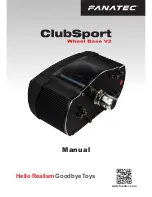
to the motor is safely removed, so that no further
movement is possible. It is not necessary to monitor plant
at a standstill. If an external force effect is to be
anticipated, provide additional measures to safely prevent
any potential movement (e.g. mechanical brakes).
NOTICE
For all applications with Safe Torque Off, it is important
that short circuit in the wiring to T37 can be excluded.
This can be done as described in EN ISO 13849-2 D4 by
the use of protected wiring, (shielded or segregated).
Example with SS1
SS1 correspond to a controlled stop, stop category 1
according to IEC 60204-1 (see
). When
activating the safety function, a normal controlled stop is
performed. This can be activated through terminal 27.
After the safe delay time has expired on the external safety
module, the STO istriggered and terminal 37 is set low.
Ramp down is performed as configured in the frequency
converter. If the frequency converter is not stopped after
the safe delay time, the activation of STO coasts the
frequency converter.
NOTICE
When using the SS1 function, the brake ramp of the
frequency converter is not monitored with respect to
safety.
Example with Category 4/PL e application
Where the safety control system design requires 2
channels for the STO function to achieve Category 4/PL e,
one channel can be implemented by Safe Torque Off T37
(STO) and the other by a contactor, which may be
connected in either the frequency converter input or
output power circuits and controlled by the safety relay
(see
). The contactor must be monitored
through an auxiliary guided contact, and connected to the
reset input of the safety relay.
Paralleling of Safe Torque Off input the one safety relay
Safe Torque Off inputs T37 (STO) may be connected
directly, if it is required to control multiple frequency
converters from the same control line via one safety relay
(see
). Connecting inputs increases the
probability of a fault in the unsafe direction, since a fault
in one frequency converter might result in all frequency
converters becoming enabled. The probability of a fault for
T37 is so low, that the resulting probability still meets the
requirements for SIL2.
12
37
FC
1
2
3
130BB968.10
Illustration 2.3 STO Example
FC
12
18
37
3
1
2
130BB969.10
Illustration 2.4 SS1 Example
12
FC
37
K1
K1
K1
130BB970.10
2
3
1
Illustration 2.5 STO Category 4 Example
Introduction to VLT® HVAC D...
Design Guide
MG11BC02
Danfoss A/S © Rev. 06/2014 All rights reserved.
17
2
2
















































